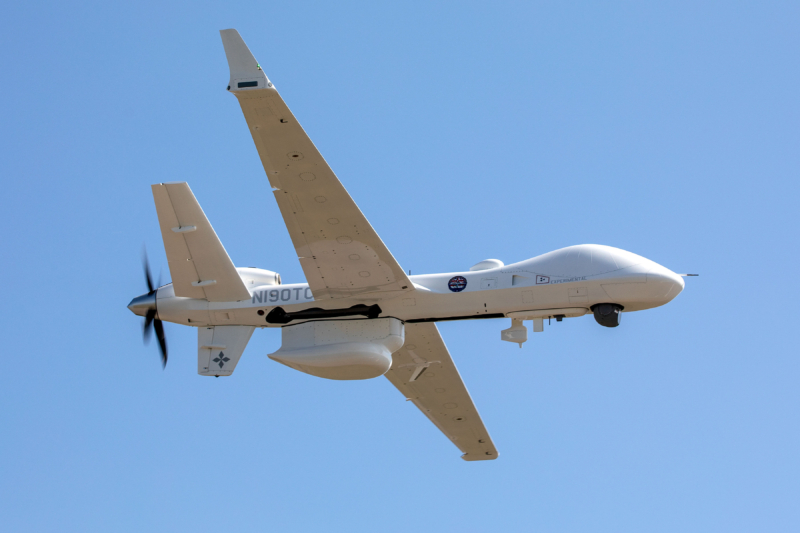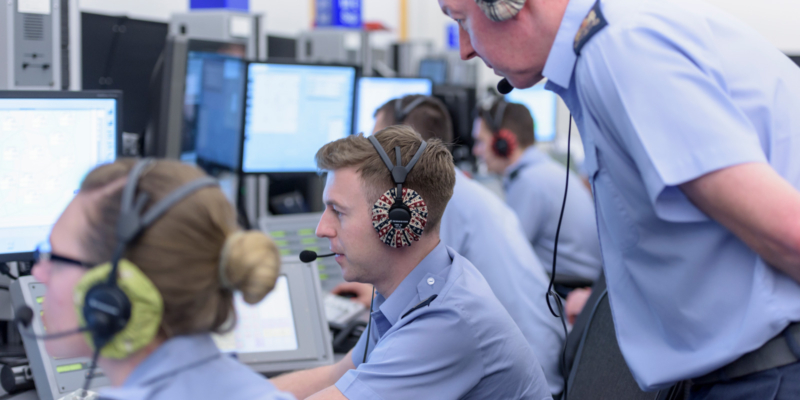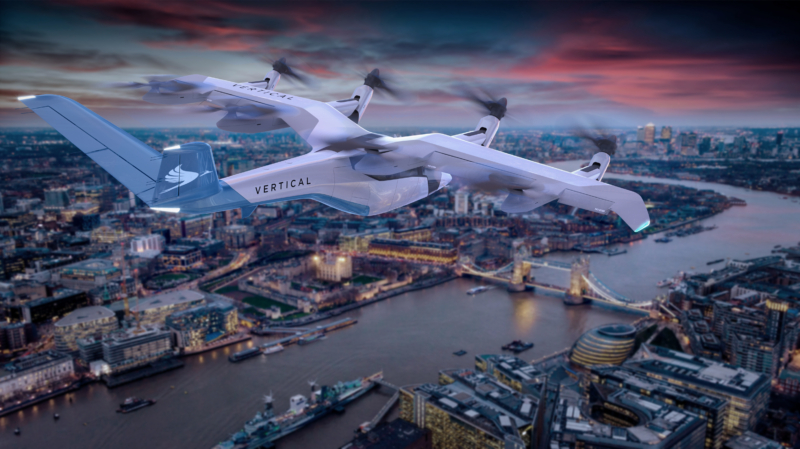The future has landed – SkyGuardian arrives in the UK
1 October 2021We know that flying in the future will look very different from the past for all types of airspace user, and, following a successful trial of a new type of aircraft that will be used by the British military, that future is now another step closer.
SkyGuardian, a new uncrewed and remotely piloted aircraft, has spent time in the UK this summer to conduct a number of trial flights that test the platform, its procedures, and how it can safely integrate into UK airspace. Mark Watson, Manager UTM Strategy & Service Integration at NATS, tell us more about the aircraft and what it will be used for in future.
What is SkyGuardian?
SkyGuardian is the base model of ‘Protector’ – the next-generation, medium-altitude long-endurance RPAS (remotely piloted aircraft system) currently being procured by the MoD. The aircraft has an impressive 6000+ mile range; can fly for over 40 hours on a single sortie; can be fully automated including for take-off and landing; can carry a detect & avoid radar system; and can be equipped with a wide array of different capabilities. Designed and built by General Atomics Aeronautical Systems, Inc., Protector is due to enter active service with the Royal Air Force in 2024.
Why is SkyGuardian in the UK this summer?
SkyGuardian is currently in the UK to conduct trial flights and test airspace integration procedures, clocking up over 80 hours of flight time so far. The aircraft is flying in SeaGuardian configuration (featuring a maritime radar pod) and has been operating from RAF Waddington and RAF Lossiemouth, conducting trial flights around those areas as well as two longer flights to the Netherlands and back. Integrating SkyGuardian has been the largest airspace co-ordination project in UK peacetime history – bigger even than the iconic RAF100 flypast.
How has NATS been involved?
On 12th September 2021 the aircraft flew from RAF Waddington, in Lincolnshire, to RAF Lossiemouth, in north-east Scotland, flying through controlled airspace and receiving an air traffic control service from NATS, just like any ordinary aircraft.
The flight was controlled through more complex airspace than any previous UAS flights in the UK, requiring NATS ATCOs to transfer control between multiple civil sectors as it skirted the busy Manchester TMA and passed through the Scottish TMA to reach its destination.
The procedures for the flight were close to what we do with conventional crewed aircraft, which helped validate that existing methods are equally applicable to controlling remotely crewed aircraft, when they can be detected and perform like SkyGuardian.
While it’s in Lossiemouth, SkyGuardian is working with our military colleagues to support Exercise Joint Warrior, a UK-led military training exercise involving 12 nations from NATO and allied militaries.
78 Squadron, based at Swanwick Centre, has been involved throughout the trials, developing flight profiles and coordinating with various military and civil agencies to ensure flights around RAF Waddington, Aberporth, Portsmouth, RAF Lossiemouth, and to Leeuwarden Air Base in the Netherlands were a success. SkyGuardian was treated as any other IFR aircraft would be throughout those flights, including when it flew in Class G (uncontrolled) airspace where the aircraft received a Traffic Service from 78 Squadron.
There were no major issues reported during those trial flights, highlighting the success of the operating model and proving the concept in time for the arrival of the RAF’s ‘Protector’ in 2024.
What next for SkyGuardian?
The first UK customer of SkyGuardian is the Royal Air Force which will operate a 16-strong fleet of the aircraft, to be known in-service as ‘Protector’. When it enters service in 2024 it will be used to enhance the RAF’s ISTAR capabilities (Intelligence, Surveillance, Target Acquisition, Reconnaissance), and will be permanently based at RAF Waddington in a new £94million net-zero campus, purpose built for the Protector Force. Each crew will consist of a Pilot, Sensor Operator and Mission Intelligence Operator, and its 6000mile/40hour range will enable it to provide a 24/7 ISTAR capability anywhere in the world, capable of delivering a wide array of military or civil support missions.
While the exact airspace integration procedures are still in development, the intention is for Protector to be fully integrated into UK airspace and operated in the same way as crewed aircraft. NATS will be closely involved in developing those procedures as the project progresses, and the successful SkyGuardian trial flights have been a vital step forward in that journey.












Comments
Please respect our commenting policy and guidelines when posting on this website.


